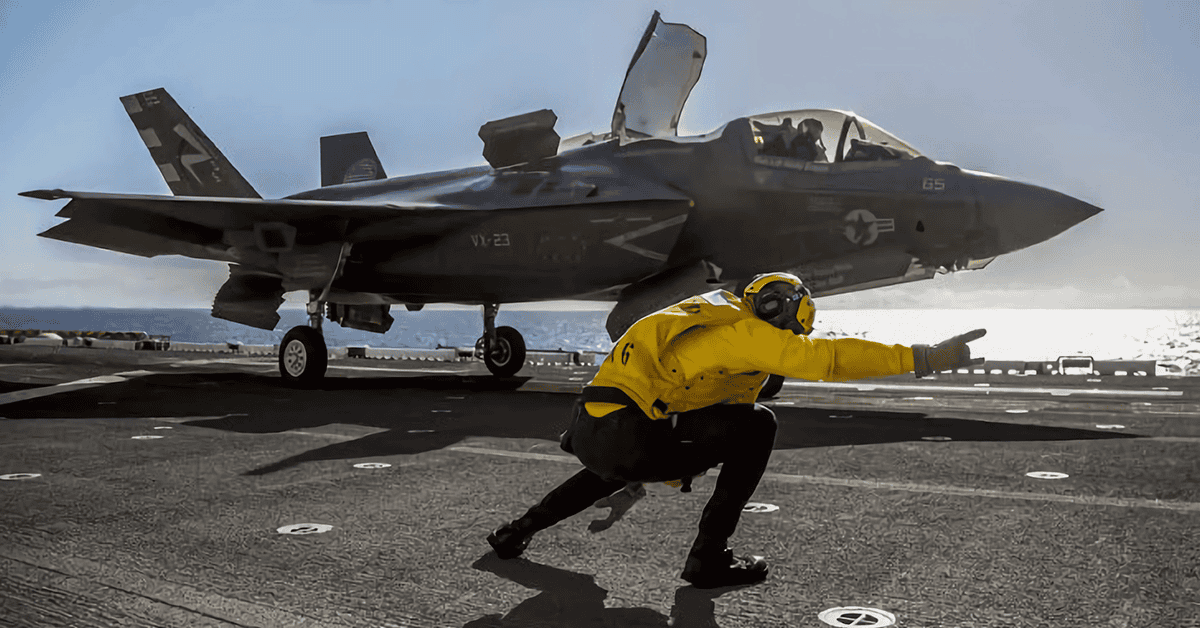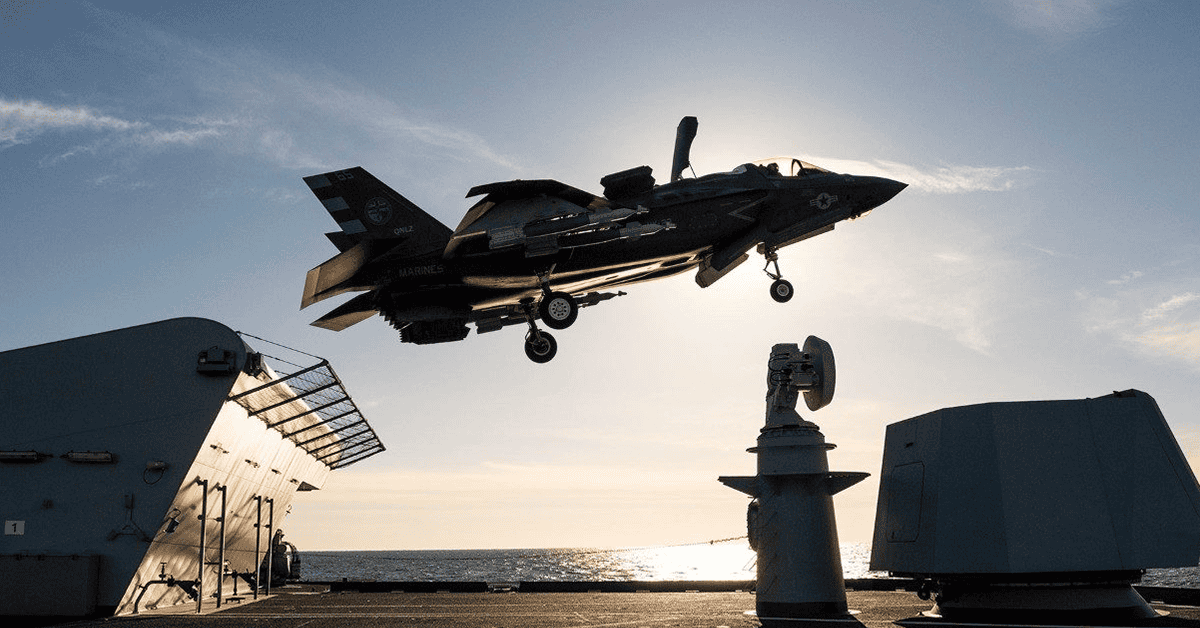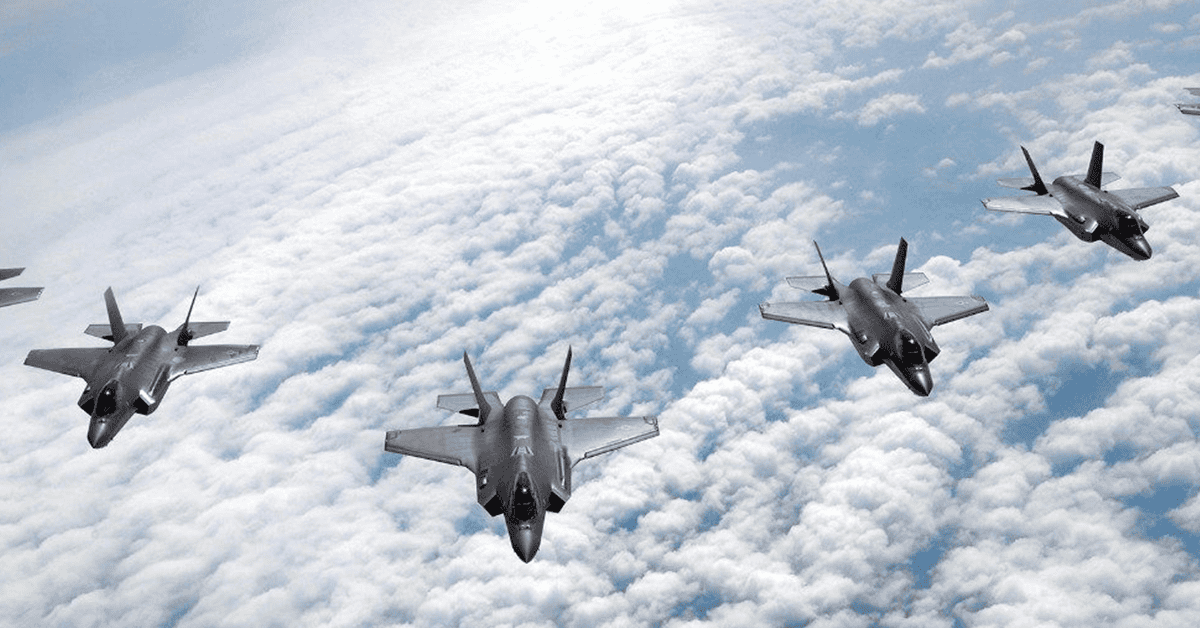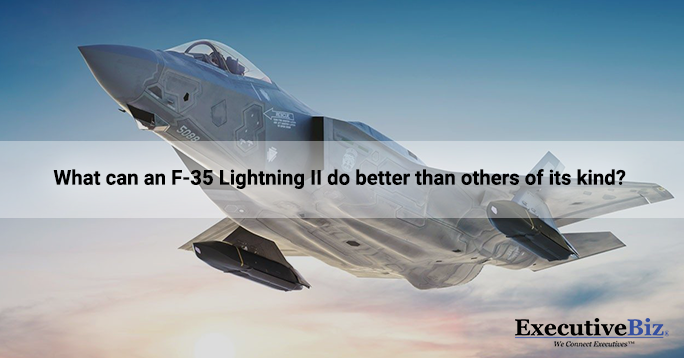The most esteemed defense leaders are gathering at the 10th Annual Defense R&D Summit to talk about cutting-edge technology that aids the US military in various missions. Register here to be part of the event and catch John Cushing, Jay Dryer, and Heidi Shyu share their insights.
The F-35 Lightning II is among the aircraft that have been dominating the skies for decades now. With the skies providing a vast expansion for warfighters to thwart threats from above ground and sea, the advanced aircraft F-35 Lightning II of the United States Armed Forces maneuvers the air and maintains combat advantage.
That said, its power and might are due to consistent modernizations and developments.
Uncover what the F-35 Lightning II can do better than other aircraft of its kind.
F-35 Lightning II: The Fighter Jet of the Future

The F-35 Lightning II is a series of single-seat, single-engine, and all-weather stealth combat aircraft designed and developed by Lockheed Martin.
Developments of the aircraft began in 1995 as part of the Joint Strike Fighter (JSF) program. This initiative aimed to overhaul several US Military aircraft, such as the F-16 Fighting Falcon, McDonnell Douglas F/A-18 Hornet, and Fairchild Republic A-10 Thunderbolt II.
The first rendition of the F-35 series was the F-35A, which took flight in 2006. Ten years later, Lockheed Martin developed different variants of the aircraft to suit a wide range of military operations with present and future configurations.
To date, the current F-35 Lightning II prototype is designed to deliver unrivaled advantages for US Air Force, Navy, and Marine Corps pilots. The combat jet also serves as the cornerstone of the US Fighter Fleet and global allies.
What sets the F-35 Lightning II apart from other aircraft?

The F-35 Lighting II dons the most advanced fighter aircraft capabilities that enable pilots to maneuver the skies with ease while averting adversaries.
Here are the features that set it apart from other warfighter aircraft:
Weight and Frame
The F-35 Lightning II has an empty weight of 29,300 lbs and a maximum takeoff weight of 70,000 lbs. Lighter than its predecessors, Its weight allows it to be speedier in the air while also capable of carrying heavy armaments and cargo.
As for its frame dimensions, this Lockheed Martin aircraft has a wingspan of 35 feet, a height of 14 feet, and a length of 51 feet. The jet also has a maximum payload weight of 18,000 lbs which is crucial for carrying instruments for operations.
Speed
The F-35 Lightning II is fast with its maximum speed being Mach 1.6, or 1,200 mph, at altitude. Despite being “slower” than the F-22 jet, Lockheed Martin engineered the F-35 Lightning II jet to be on par with other fourth-generation aircraft such as the F-16 and F/A-18 family.
Its competitive speed enables pilots to control the aircraft while reducing drag in the external stores, especially when the jet is mounted with a weapons system. Additionally, the speed entails more stealth and a more reliable mission flight profile.
Armaments
Being a sophisticated warfighting aircraft, the F-35 Lighting II can carry various advanced armaments. It can be armed with guns, missiles, and bombs, thanks to its ten hardpoints.
A close inspection of the F-35 Lightning II aircraft revealed six external stores, located on the wings, and four internal stores. Together, these hard points could carry a total weapon payload of over 18,000 tons (8,200 kg).
The armaments that are suitable for the current configuration of the F-35 Lightning II include:
Bombs:
- B-61 mod 12 nuclear bombs
- Paveway laser-guided ammunition
- Joint Direct Attack Munition
- AGM-154 JSOW
- GBU-39 Small Diameter Bomb
- GBU-53/B StormBreaker
Missiles:
a.) Air-to-air
- AIM-9X Sidewinder
- AIM-120 AMRAAM
- AIM-132 ASRAAM
- AIM-260 JATM
- MBDA Meteor
b.) Air-to-surface
- AGM-88G AARGM-ER
- AGM-158 JASSM
- AGM-179 JAGM
- SPEAR 3
- Stand-in Attack Weapon
c.) Anti-ship missiles
- AGM-158C LRASM
- Joint Strike Missile
Also worth mentioning, some of these weapons are either currently ongoing integration or will be launched three to four years later.
Synergy with other aircraft and artillery systems
This aircraft’s hefty weapon payload would not only make it more efficient for warfighters to take weapons they’ll need on operations. Designated pilots will be supporting other aircraft with lighter weapon payloads, such as the MQ-9 Reaper drone.
Added to that, F-35 Lightning II pilots may launch weaponry from above to deter enemies on the ground while land warfighters reload HIMARS and other artillery launcher systems.
System
Another strong point of the F-35 Lightning II is its support and training system. Dubbed the Autonomic Logistics Information System (ALIS), the structure encompasses the aircraft’s current configurations, operational parameters, component history, training procedures, predictive diagnostics, health management, anticipated upgrades and maintenance, mission strategizing, and aircraft service support.
This warcraft also relies on Electro-Optical Distributed Aperture System (DAS) to enhance pilots’ situational awareness on the battlefield, especially for advanced missile warning situations. DAS provides extended-range detection and accurate targeting for ground-based and air-to-air attacks.
F-35 Lightning II in Action

Changes in the warfare domain have catapulted various global military powers to upgrade their aerial defense strategies. For example, the ongoing conflict between Ukraine and Russia has destabilized the might of fourth-generation jets, which called for United States allies to procure F-35 Lightning II fighter aircraft for future military missions.
On October 11, 2023, an F-35 Lightning II jet successfully kicked off its developmental test phase 3 (DT-3) sea trials at the HMS Prince of Wales (R09), the United Kingdom’s largest warship.
Captain Richard Hewitt, Commanding Officer of the battleship, highlighted that this development phase is crucial to enhancing the UK’s fifth-generation aircraft carrier. He added that the deployment of the aircraft develops its advanced landing and takeoff techniques, which will result in better recovery, faster turnaround, and more efficient weapon launch capabilities.
Besides the UK, the Czech Republic has also planned to purchase F-35 advanced fighter jets worth $6.5 billion. Prime Minister Petr Fiala stated that this contract is vital for enhancing the country’s tactical air forces for several years to come and for boosting its alliance with other NATO-aligned nations.
While the F-35 Lightning II continues to make waves overseas, it also undergoes continuous development and testing to boost its capacity.
On November 22, 2023, a prototype F-35 fighter aircraft was launched from Lockheed Martin’s Fort Worth, Texas facility. The deployment was part of the Pentagon’s strategy of integrating interim versions of Technology Refresh 3, or TR-3, hardware and software configurations.
Last June, the Pentagon halted the delivery of F-35 fighter jets due to issues with the software integration. Now, by testing the interim TR-3 program, the Department of Defense would enable the government to accept and launch the latest versions of the combat aircraft.
You might also be interested in: Boeing Gears Up for Test Flight of Air Force’s 3rd F-15EX Eagle II Fighter Jet





